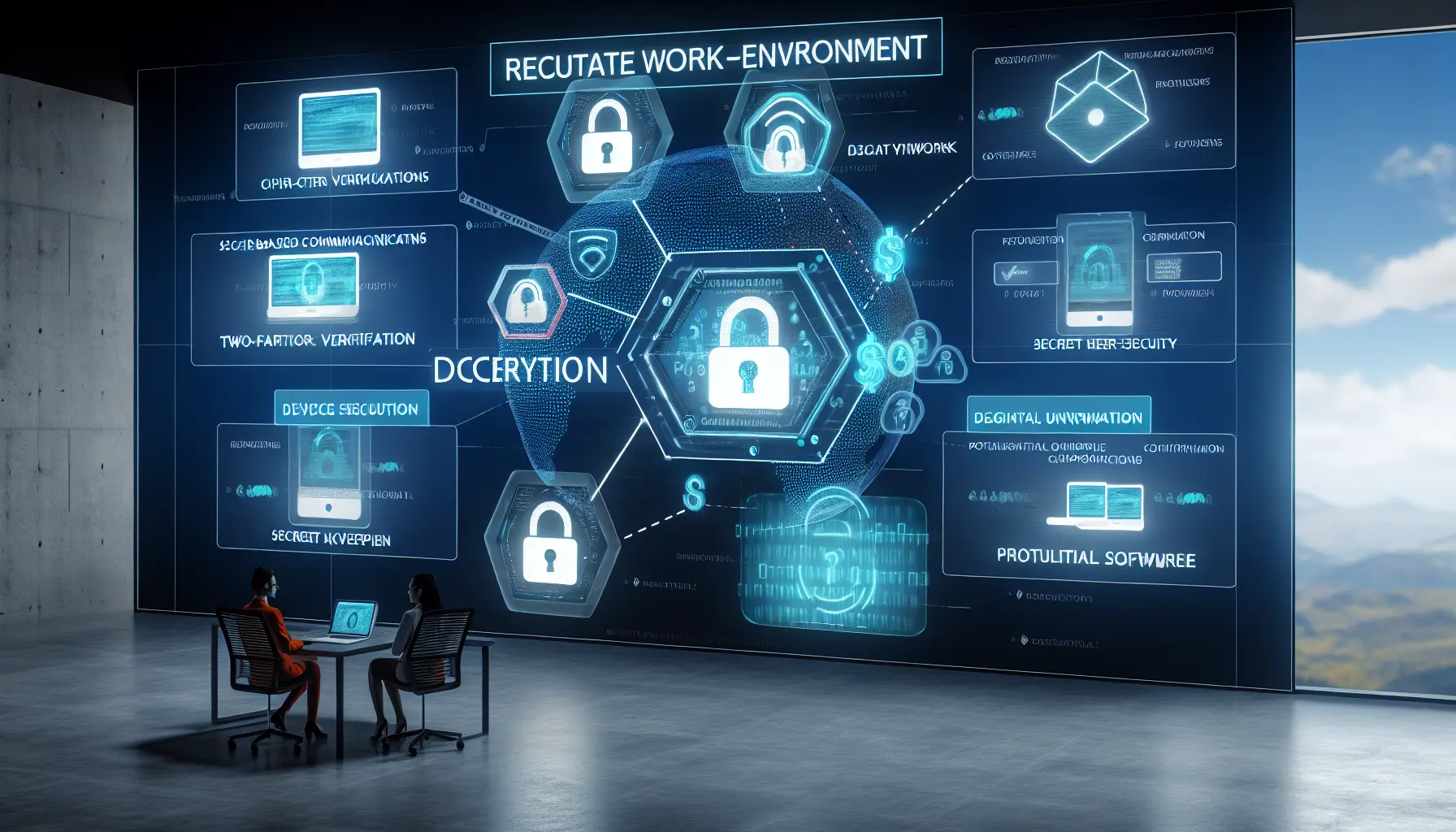
Estimated reading time: 12 minutes
Key Takeaways
- Implementing strong security measures is essential for remote work success.
- Remote work introduces new security risks that need proactive addressing.
- Clear security policies and access controls are fundamental to a secure setup.
- Multi-factor authentication and team training are critical steps in building security.
- Ongoing maintenance and updates are vital to sustain a secure remote environment.
Table of Contents
What Makes a Remote Work Setup Secure?
A secure remote work setup combines specific technologies, protocols, and practices that let teams work safely from anywhere while protecting sensitive company data. With cyber attacks increasing by 72% since 2021, implementing proper security measures isn't optional—it's essential for business survival.
Think of your remote work setup like a house. You need strong locks (encryption), security cameras (monitoring tools), and house rules (clear policies) to keep everything safe. This guide will show you exactly how to build and maintain that security.
Why Remote Work Security Matters Now More Than Ever
The shift to remote work has created new security risks that catch many organizations off guard. Common challenges include:
- Employees using weak passwords across multiple accounts
- Personal devices lacking proper security measures
- Sensitive data transmitted over unsecured networks
- Staff falling victim to sophisticated phishing attacks
These vulnerabilities can lead to devastating consequences—from financial fraud to stolen customer data to regulatory fines. Building a secure foundation prevents these issues before they start.
Essential Components for Your Secure Team Setup
Clear Security Policies and Access Controls
Start by establishing clear rules about:
- Who can access which resources
- What devices are approved for work use
- How sensitive data should be handled
- Required security training for all team members
Document these policies and make them easily accessible to everyone. Review and update them quarterly as threats evolve.
Required Remote Work Software
Your tech stack needs these security-focused tools:
Communication Security:
- Signal for encrypted messaging
- Slack with security plugins for team chat
- Video conferencing tools with end-to-end encryption
File Security:
- Tresorit or Dropbox Business for encrypted storage
- Password managers like 1Password for teams
- Enterprise-grade VPN services
Building Your Security Framework
Step 1: Implement Multi-Factor Authentication
Enable MFA on every account possible. This simple step prevents 99.9% of automated attacks. Use authenticator apps rather than SMS codes for stronger security.
Step 2: Deploy Endpoint Protection
Install and maintain:
- Modern antivirus software
- Anti-malware tools
- Device management solutions for remote monitoring
Step 3: Train Your Team
Regular security training should cover:
- Spotting phishing attempts
- Creating strong passwords
- Safe file sharing practices
- Incident reporting procedures
Advanced Security Strategies
Zero Trust Security Model
Verify every access attempt, regardless of location or device. Never assume any connection is automatically safe.
Data Encryption
Protect information:
- In transit using SSL/TLS protocols
- At rest with AES-256 encryption
- During backups with encrypted storage
Maintaining Your Secure Setup
Security isn't a one-time thing. Create ongoing processes for:
- Regular software updates and patches
- Security audit schedules
- Policy reviews and updates
- Team training refreshers
Taking Action
Start improving your remote work security today:
- Audit your current setup against this guide
- Address any gaps in your security measures
- Schedule team training sessions
- Review and update security policies
- Deploy necessary security tools
Remember: Strong security comes from consistent practices, not just tools. Build these habits into your daily operations to protect your team and data effectively.
Frequently Asked Questions
Why is multi-factor authentication important for remote work?
Multi-factor authentication adds an extra layer of security, making it significantly harder for unauthorized users to access accounts even if passwords are compromised.
What are the best practices for securing personal devices used for work?
Ensure devices have updated antivirus software, use strong passwords, enable device encryption, and separate personal and work activities.
How often should security policies be reviewed and updated?
Security policies should be reviewed and updated at least quarterly or whenever there are significant changes in the threat landscape.
What is the Zero Trust Security Model?
The Zero Trust model is a security concept that requires all users, even those inside the organization's network, to be authenticated, authorized, and continuously validated before accessing resources.
Why is regular team training essential in maintaining security?
Regular training keeps the team updated on the latest security threats and best practices, ensuring they can identify and prevent potential security breaches.









